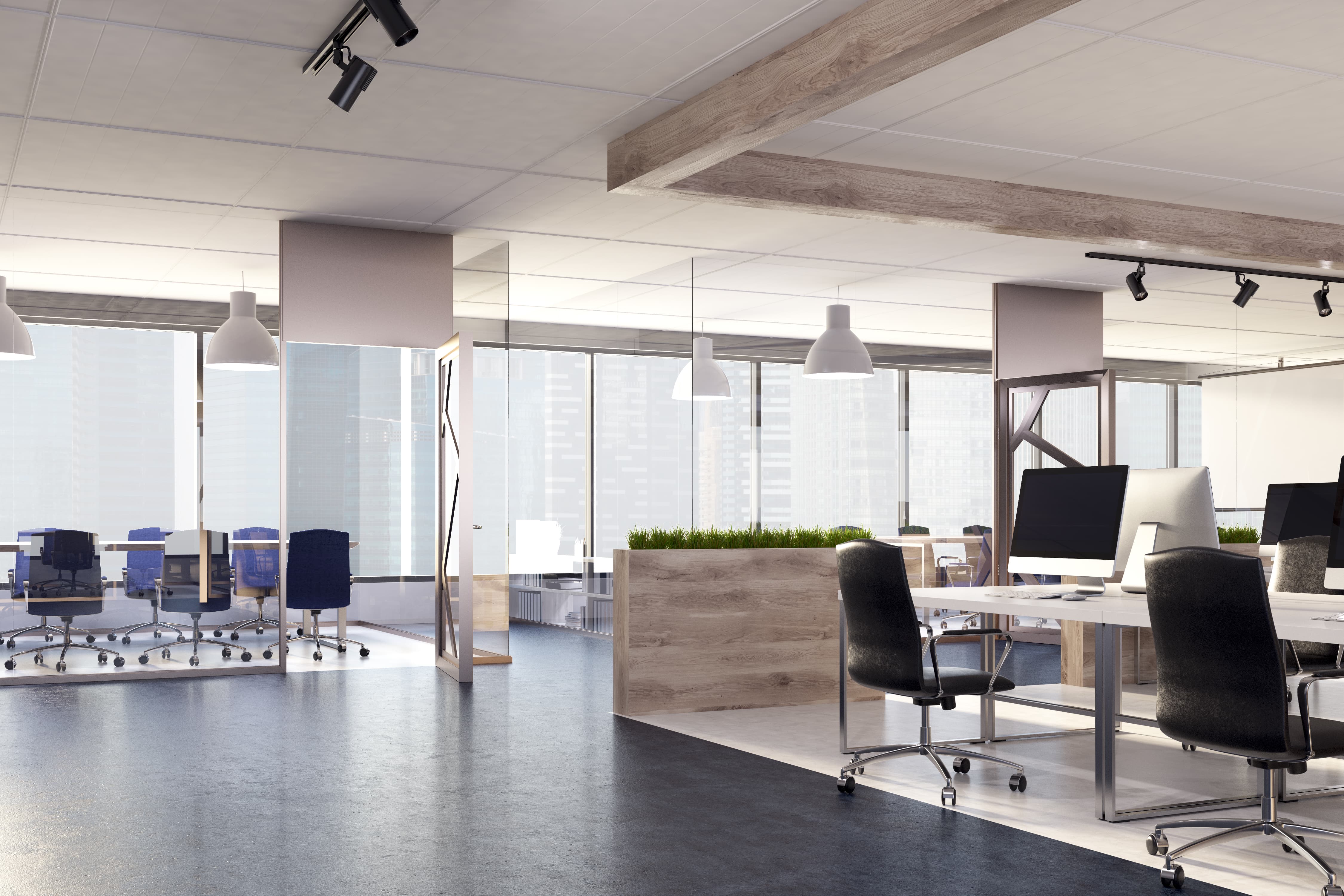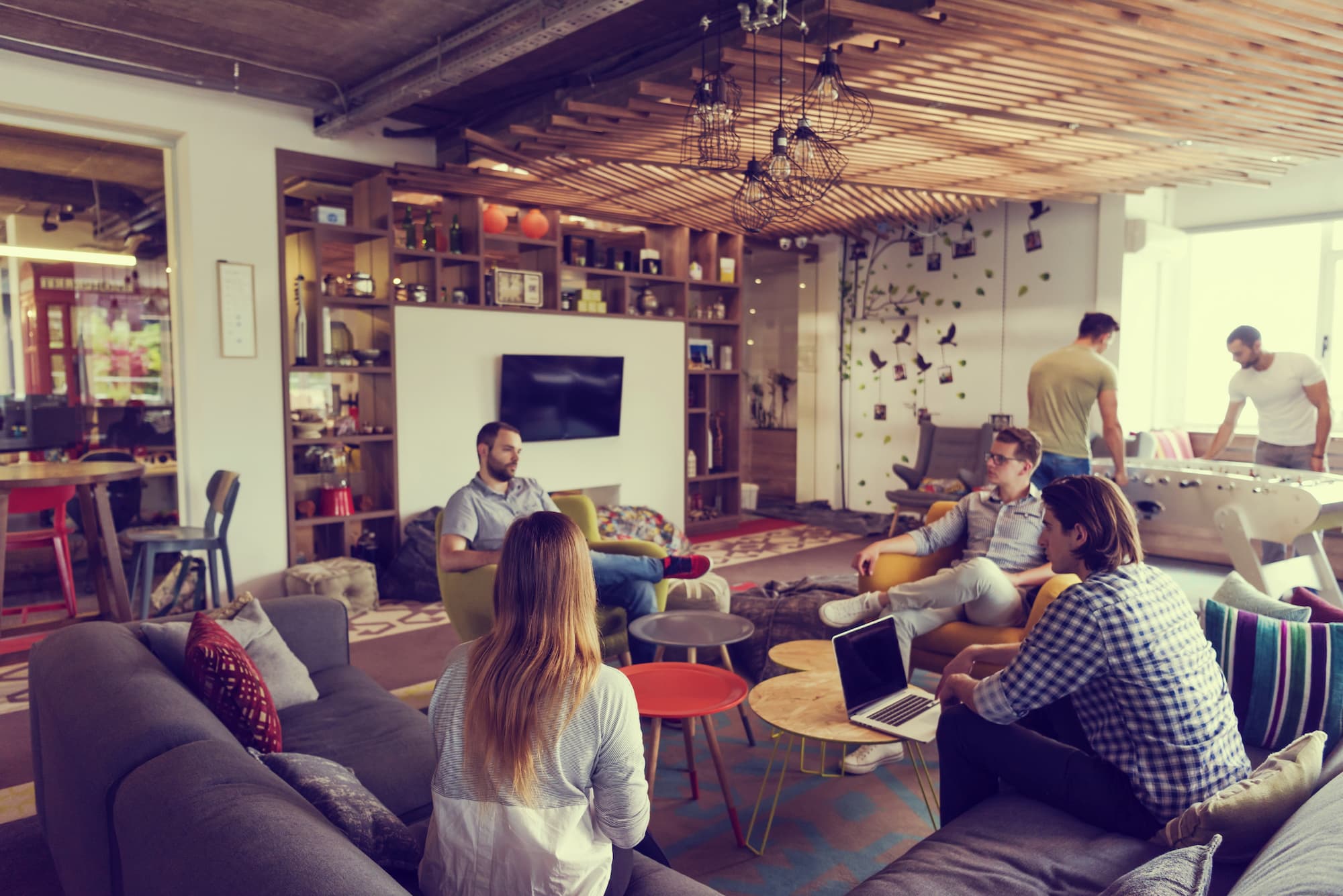Does it ever feel like there’s no end to the list of things you must consider while running your business?
From the obvious (like defining your vision and values) to the obscure (like making sure the new hire fits in with the rest of the employees), you’ve got a lot on your plate. So on top of everything else, you may roll your eyes when someone starts talking to you about office design.
Unfortunately, whether you like it or not, design factors like desk layout, ergonomics, natural lighting, and air quality in the office really do matter.
The good news? Ensuring your company’s office design aligns with its corporate values and culture will pay off in the long run. As office productivity improves, your future self will thank you for making the investment.
Balance Collaborative and Individual Workspaces
For better or worse, open concept office layouts are the new norm. Making the most of valuable square footage while promoting a transparent, team-focused corporate culture seems like a natural choice. That being said, a quick Google search makes it clear that although popular, the open office isn’t necessarily well liked.
Why is this, given the obvious benefits? The common theme amongst open-concept critics is that these spaces lack balance.
Collaboration is great – even necessary. Just not all of the time.
Experts suggest that people working in knowledge industries engage in four modes of work: focusing, collaborating, learning, and socializing. Not surprisingly, each of these types of work would benefit from a different workspace.
A large workplace study out of the UK builds on this, claiming that those who primarily use their individual desk for most work activities do so to the “detriment of performance.” The researchers continue, saying that when employers give workers “a greater variety of spaces, and the choice to work when and where suits their current tasks and workstyles best…their satisfaction and performance will improve.”
Open office layouts DO work (and they work well), but you’ve got to provide a balance of collaborative and individual workspaces if you want to fully optimize office productivity.
Encourage Employee Wellbeing
Harvard researchers reviewed 36 corporate wellness programs and the results were notable: for every dollar a company spent on wellness programs, costs attributed to absenteeism fell an average of $2.73.
If your company already invests in a wellness program (and most do), why not add to the benefits by creating a physical space that also promotes employee well being. Factors such as air quality, room temperature, lighting, and the comfort of furniture impact wellness; and therefore productivity.
If you challenge employees to think creatively and produce innovative solutions for your business, you must first provide them with an office space that supports these responsibilities. It’s hardly fair to expect workers to put out high-quality work if they’re constantly being nagged by preventable irritations.
Decrease Noise Distractions
The GSA, an independent agency supporting the function of the US Government suggests that “because sound is not visible, we tend to underestimate its importance.”
Sound isn’t glamorous. Creating a noise-free office environment doesn’t have the same appeal as designing a beautiful, trendy, or ultra-modern office space. But just because we undervalue something doesn’t make it less impactful.
The difficulty with noise is just how subjective the term is. Some people produce their best work when surrounded by the buzz of conversation and movement in the office. It would take a lot for them to feel disturbed. For others, even the smallest sounds set us off, making productive work all but impossible.
It isn’t all bad, though. In fact, great ideas can develop from overhearing people chat casually. Spontaneous conversations trigger ideas that wouldn’t otherwise occur if people were hidden away in private offices.
So where’s the balance?
We can’t – nor do we want to – completely eliminate casual conversation within the office. Instead, it’s necessary to provide quiet areas for those times when tasks demand more concentration.And no matter what, good office acoustics are a must. Office layout, furniture configuration, fabric choice, and sound-absorbing panels go a long way toward eliminating distractions caused by noise.




